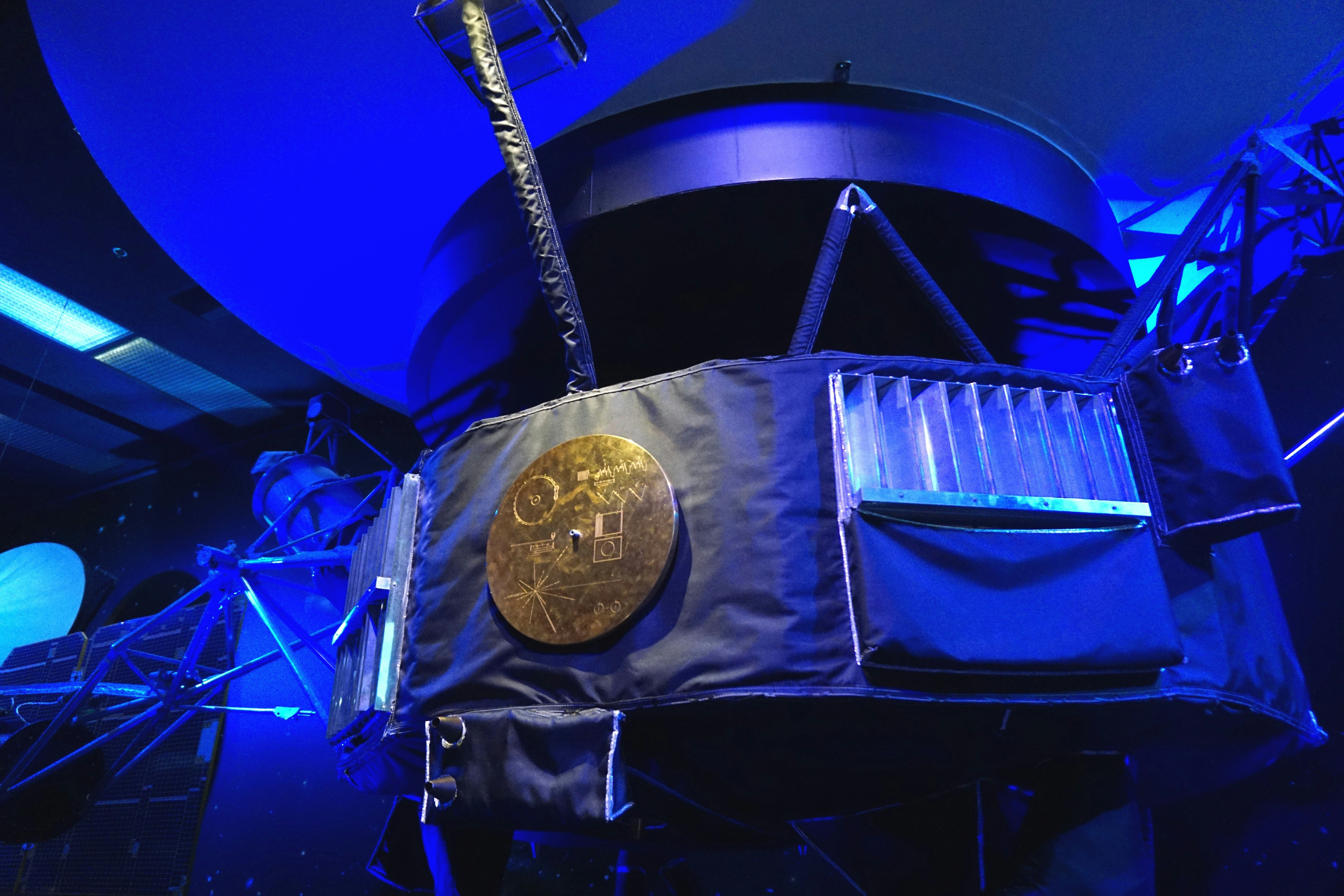
NASA engineers have shut off one of Voyager 2’s science instruments in order to save the rest of the mission.
Engineers sent a message on September 26 ordering Voyager 2’s computer to cut power to the plasma science instrument, which up until now had measured how charged particles (plasma) flowed through the space around Voyager 2. By sacrificing the plasma science instrument, engineers managed to save enough power to keep the spacecraft’s remaining four science instruments running — and communicating with Earth. Voyager 2 should make it into the 2030s with at least one instrument sending home data about what lies beyond our Solar System, according to NASA, but there are more tough decisions ahead.

The Needs of the Many Outweigh the Needs of the... Plasma Science Instrument?
Shutting off an instrument on a spacecraft that’s almost 13 billion miles away — and racing farther into space at more than 30,000 miles an hour — isn’t as simple as flipping a switch. NASA engineers uploaded the instructions to Voyager 2’s computer on September 26, but the spacecraft didn’t receive the message until 19 hours later, because it’s so far from Earth that light takes 19 hours to cross the distance. And it took another 19 hours for engineers at NASA’s Jet Propulsion Laboratory to hear that Voyager 2 had done as it was told.
The instrument shutoff isn’t a huge surprise; in fact, the real surprise is that Voyager 2’s engineering team was able to keep the ship flying for so long without shutting off an instrument. In early 2023, Inverse reported that engineers would have to shut down an instrument by early 2024 to save enough power to keep everything else running. And the plasma science instrument had been first in line for the chopping block.
Voyager 2 and its twin sister Voyager 1 are powered by radioisotope thermoelectric generators. A supply of plutonium produces heat as it decays, and the generator converts that heat into electricity. But as the plutonium decays, there’s less of it every year – which means there’s also less energy being produced. Every year, the spacecraft loses about 4 watts.
To keep as many instruments as possible running, and to keep the Voyagers able to point themselves in space and communicate with Earth (most of the time), engineers have already shut off most of the onboard heaters, designed to keep instruments and computer system from freezing, and they’ve made some changes to how the spacecraft measures and manages its power. But eventually, they were going to have to get ruthless and sacrifice an instrument for the greater good — and plasma science was the obvious choice.
RIP, PSI
Four cup-shaped sensors measure how much plasma is flowing past Voyager 2 and which direction it’s moving. Three of those cups are pointed back at the Sun; during the first part of the Voyager mission, they measured the solar wind, a constant stream of charged particles exhaled out into space by our Sun. Since 2018, when Voyager 2 passed beyond the solar wind’s reach, those sensors have had almost nothing to measure. The fourth cup points at a right angle to the other three, because it was originally designed to measure particles flowing through the magnetic fields around giant planets, which would move in different directions than the solar wind. And it’s been pretty useful out in interstellar space — up to a point.
“The most useful data from the fourth cup comes only once every 3 months, when the spacecraft does a 360-degree turn on the axis pointed toward the Sun,” says NASA in a recent press release. “This factored into the mission’s decision to turn this instrument off before others.”
In some sense, the plasma science instrument had already served its purpose. It let scientists know when Voyager 2 had crossed out of the heliosphere, the sphere of space that’s filled by the solar wind, and into the interstellar medium, the space between stars. The plasma science instrument recorded the moment that the stellar wind fell away, and most of the plasma flowing past Voyager 2 came from somewhere Out There instead.
Slowly Deteriorating Icons
The two Voyager spacecraft are still gathering valuable science data, and they’re still sending it back to Earth, but make no mistake: the Voyagers are slowly dying. Engineers on the Voyager program have done some incredibly creative things to keep the twin ships in working order, and their original design has proven surprisingly sturdy, but the clock is ticking. That ticking sounds a lot like decaying plutonium, with a backbeat of entropy.
Voyager 1’s plasma science instrument failed back in 1980, and engineers finally gave up and cut power to it in 2007. That leaves both spacecraft with four instruments left, and a steadily dwindling supply of electricity to run them with. NASA engineers hope to keep different instruments running on each spacecraft, so that they can collect as much different data about the interstellar medium as possible, for as long as possible.
And so far that’s working, in part because each of the geriatric spacecraft seems to be developing its own unique health problems. Voyager 2, for instance, has trouble receiving certain radio frequencies, which Voyager program manager Suzanne Dodd likens to a hearing deficit in an aging person.
“I often describe it like you have two twin sisters that are identical at launch, but different pieces of them have failed over time,” Dodd told Inverse in 2022. “You can think of plasma as sort of a sense of touch, because it immediately can sense the density of the plasma that you're traveling through. So you've got one twin sister with no hearing and one twin sister with no sense of touch or feel.”
By the late 2030s, both Voyagers will be down to just a single instrument each, and engineers hope it will be a different instrument on each spacecraft, although no one’s sure yet which instruments will be the last ones standing.







